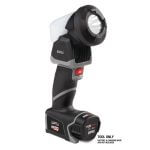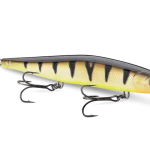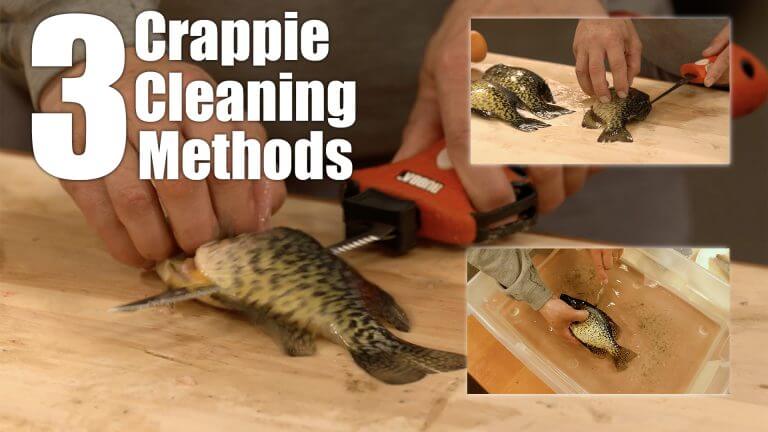Here we feature three great methods to clean crappie, after all, Crappie fishing is a popular pastime across North America, not only because these fish are enjoyable to catch, but also because they are delicious to eat. In this article, we will explore three effective methods for cleaning crappie, ensuring that you can prepare your catch for a tasty meal with ease.
Clean Crappie Method 1: Using a Single-Bladed Fillet Knife
The traditional method of cleaning fish involves using a single-bladed fillet knife. Here’s how you can do it step-by-step:
- Prepare the Fish: Place the crappie on your cutting surface with its back facing you.
- Make the Initial Cuts: Lift the pelvic and pectoral fins and make a cut towards the gills.
- Fillet the Fish: Turn the fish so it faces you and run the blade along the backbone, just above the rib cage. You should feel the knife touch the rib cage.
- Remove the Fillet: Insert the knife through towards the tail and cut right through. Peel back the fillet to expose the rib cage and then cut along its edge.
- Skin the Fillet: If you choose to remove the skin, lay the fillet flat on the board, pinch the skin at the tail end, and slide the knife between the skin and the meat.
Method 2: Using an Electric Fillet Knife
For those who prefer a quicker and potentially less labor-intensive method, an electric fillet knife is a great option.
- Initial Cuts: Similar to the first method, start by lifting the fins and making a cut towards the gills.
- Cut Through the Rib Cage: Instead of navigating around the rib cage, use the electric knife to cut straight through it, simplifying the filleting process.
- Remove the Rib Cage: After filleting, use a smaller knife to carefully remove any remaining rib cage from the fillet.
- Skin Removal: The process for removing the skin remains the same as in the first method.
Method 3: Scaling, Heading, and Gutting
This traditional method, often referred to as the “old school” approach, involves more steps but retains the skin, which enhances the flavor of the fish.
- Scale the Fish: Using a kitchen spoon or a specialized scaling tool, remove all scales from the fish. Performing this task underwater can minimize mess, as the scales will stay contained within the water rather than scattering.
- Remove the Head and Entrails: Cut behind the gills and fins to remove the head, then pull out the entrails.
- Resulting Preparation: This method results in a whole, clean fish with the skin intact, which many believe offers a flavor advantage when cooked.
Conclusion
Cleaning crappie, like cleaning most fish, requires a few steps to ensure you remove the scales, guts, and any other unwanted parts. Here’s a basic guide:
- Prepare your workspace: Lay down some newspaper or paper towels to catch the mess. Have a sharp knife, a cutting board, and a bowl of clean water ready.
- Scale the fish: Hold the crappie firmly and scrape the scales off using the back of a knife or a specialized fish scaler. Start from the tail and work your way towards the head.
- Remove the head (optional): Some people prefer to leave the head on for cooking, while others prefer to remove it. If you want to remove it, make a diagonal cut just behind the gills and discard the head.
- Make a slit: Lay the crappie on its side and make a shallow cut along the belly from the vent (anus) to the head.
- Remove the guts: Use your fingers or a spoon to scoop out the guts. Be sure to remove all the internal organs.
- Rinse the fish: Rinse the inside and outside of the crappie under cold, running water to remove any remaining blood or guts.
- Trim fins (optional): If desired, trim any remaining fins with scissors or a knife.
- Rinse again: Give the cleaned crappie one final rinse in clean water.
- Pat dry: Use paper towels to pat the crappie dry.
Now your crappie is ready to be cooked! You can fry, bake, grill, or cook it however you like. Remember to properly dispose of the fish waste and clean your workspace afterward.
Each of these methods has its own merits and can be chosen based on your personal preference, the tools you have available, and how you plan to cook the crapp ie. Whether you’re a seasoned angler or a novice, mastering these techniques will enhance your culinary experience with crappies.
Remember, the key to a good fillet is patience and practice. Don’t be discouraged if your first few attempts aren’t perfect. With time, you’ll be able to clean crappies quickly and efficiently, making the most out of your catch.















